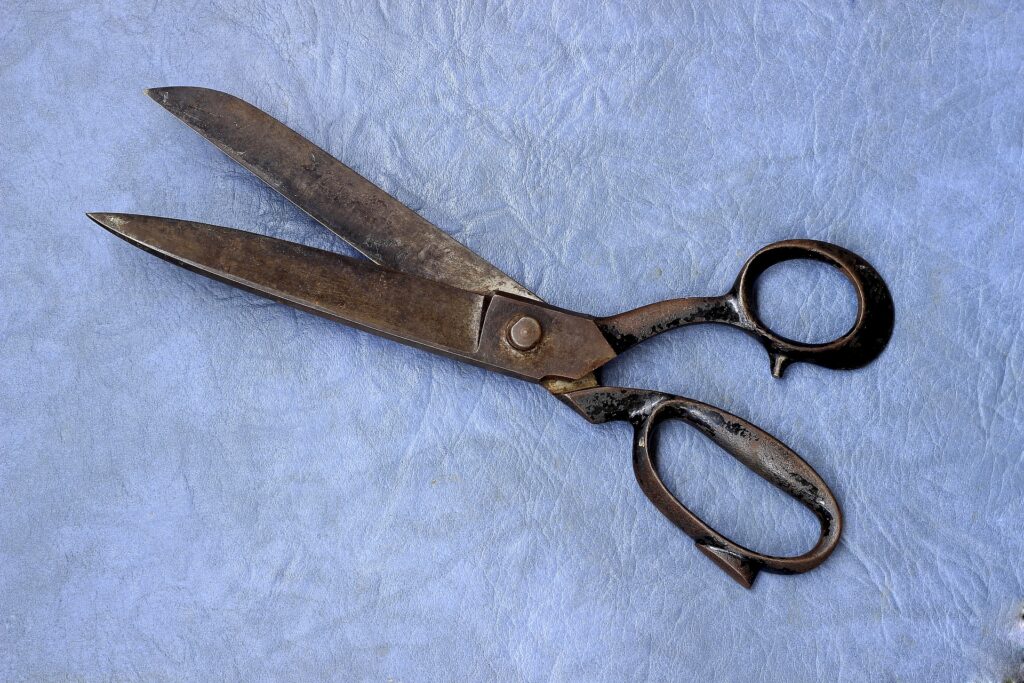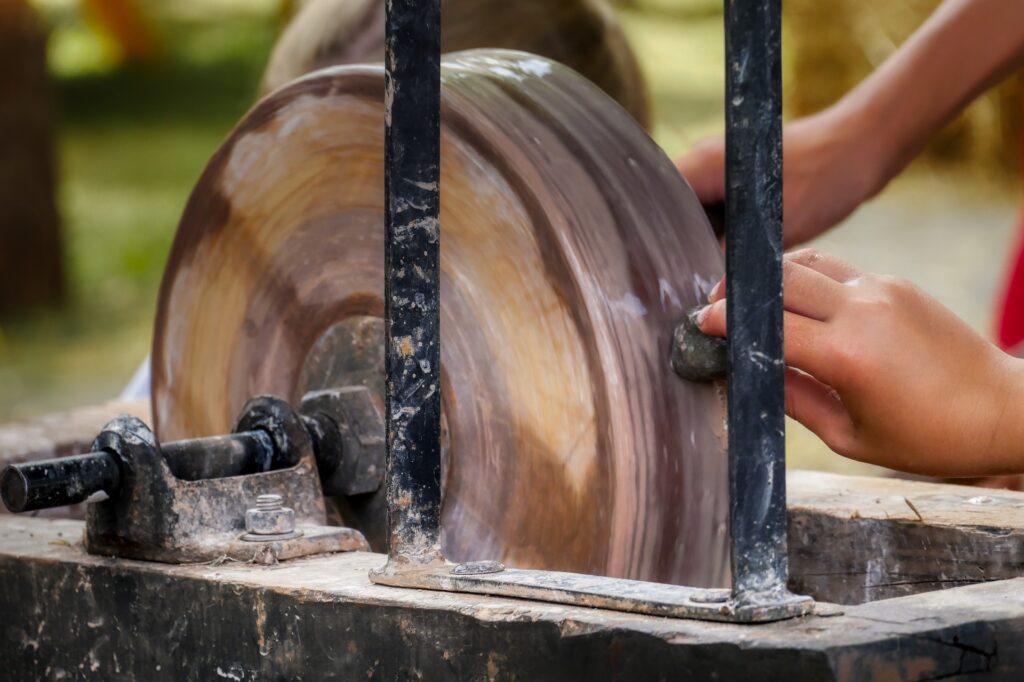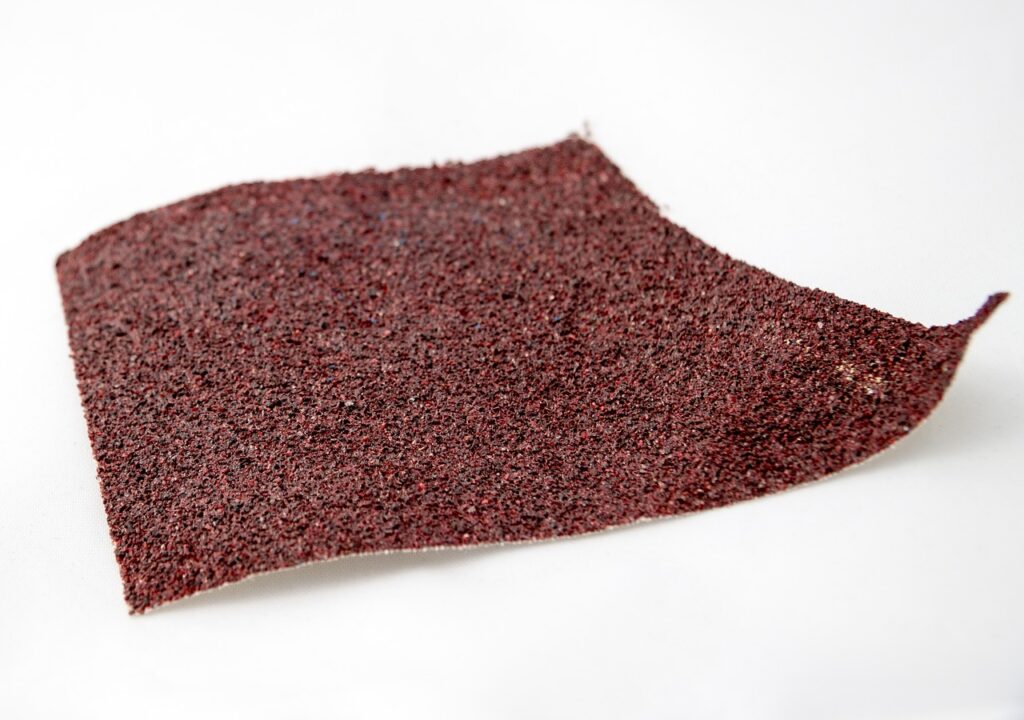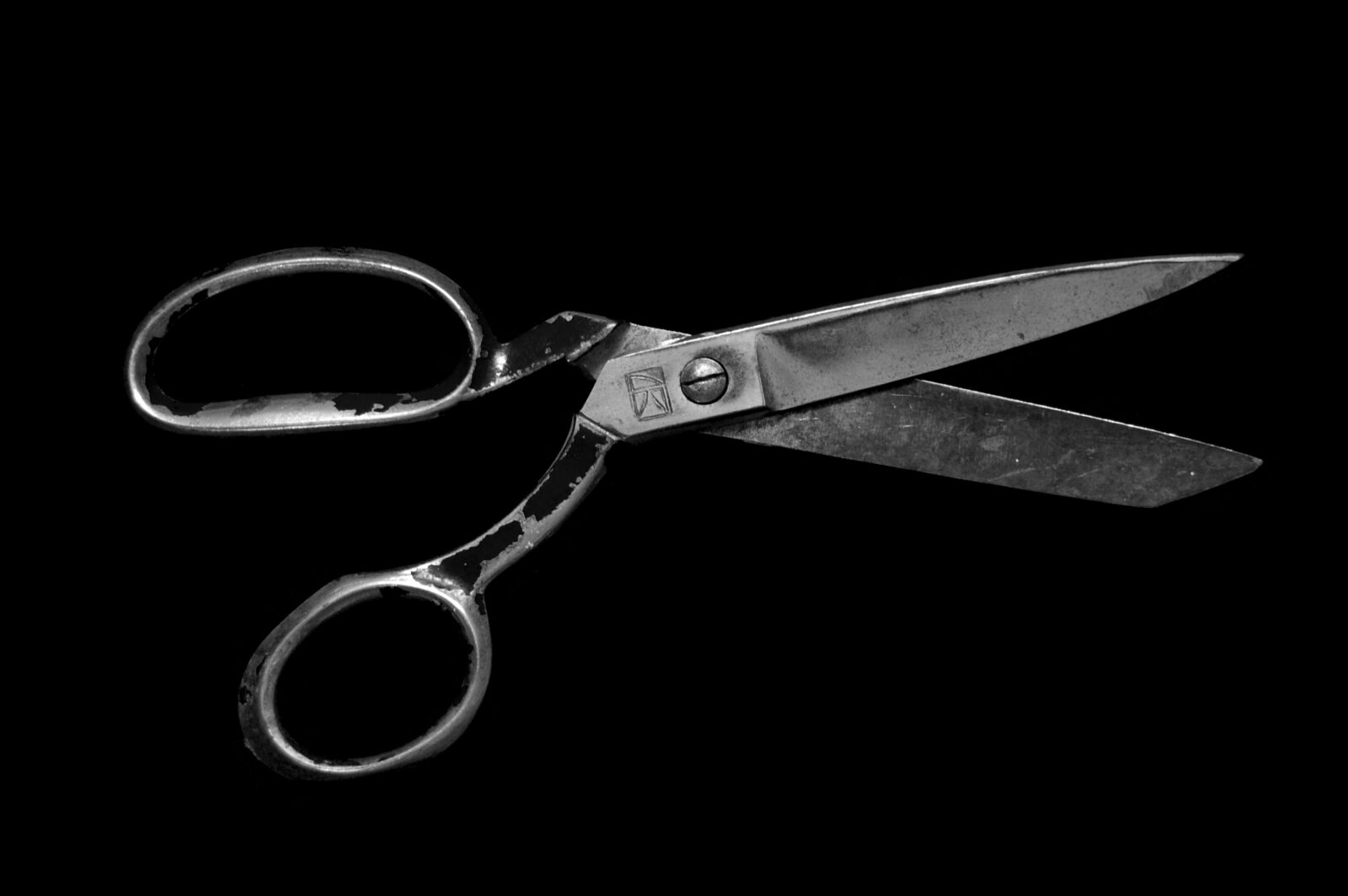Sharpening scissors might sound like a weird concept. However, it is no different than sharpening kitchen knives. Although we are more used to the second process, sharpening scissors is just as easy. In order to use scissors at their full potential for quick and clean cutting, there are special sharpeners you can buy.
However, there are four other alternatives that you can use that won’t cost a penny. Without further ado, here is our list of materials you can use for sharpening scissors with materials you probably already have at home.

Sharpening Stone
The first tool you can try is a sharpening stone, also known as a bench stone or whetstone. A pair of scissors consists of a pair of metal blades pivoted. The sharpening stone consists of two sides as well, one coarse surface and a finer surface. Before proceeding to sharpen the blades, wet the stone surface with water or honing oil.
Next, start sharpening the blade on the coarse side of the stone, starting from the base to the tip. Usually, it takes between 10-20 strokes to clean one blade. To make your job easier, add a black marker like on the blade’s beveled cutting edge. This will help you see how much further you need to sharpen the blades and do it evenly. After six or so strokes, the mark on the beveled cutting edge should disappear, meaning you finished.
Next, use the finer-grit surface of the stone to repeat the process. Don’t forget to wet this side as well before using it. This method works for very dull scissors or damage.

Rotary Tool
Also known as a Dremel tool, this device comes with many different accessories. The rotary tool is an electric device, easy to use and with quick results. You will need to use the rotary abrasive stones accessory in order to sharpen the scissor blades. After setting up the machine with the correct tool, turn it on and use the grinding stone on the blade’s beveled edge.
For safety reasons, make sure you hold the device firmly. Hold the stone at the same angle as the beveled edge and move the device from the base to the tip to ensure an even surface. Keep the stone moving at all times to prevent hollow spots. After ten strokes, the blade should be sharp as new. Repeat the process for the other blade, and you can use the scissors straight away when ready. Use this method for scissors that are very dull or damaged.
Slice Sandpaper

This is a fast and easy option to use if your pair of scissors is not significantly damaged. If your scissors cut is rough but still work, start cutting slices of sandpaper. Use a sheet of 150-grit aluminum-oxide sandpaper, fold it in two with the grinding surface facing out and start cutting it.
The abrasive side of the sandpaper will act as a sharpener. However, you need to make sure the blade’s whole surface touches the sandpaper to create an even sharp surface. Repeat the process until you are satisfied with the results. Clean the excess of grit from the blades with a wet cloth, and you got yourself a relatively new pair of scissors.
Cut Aluminum Foil
Similar to the above method, this technique is easy to apply and offers fast results. However, instead of cutting sandpaper, use aluminum foil. Use a 12 inches long aluminum foil, fold it into six layers and start cutting slices. However, bear in mind this method works only for slightly damaged scissors.
After 10 or 12 slices, the blades should be sharp enough to cut clean again. Test it and if you are not happy with the results, repeat the process once more. Clean the scissor blades with a cloth, and you are done.
























Leave a Reply